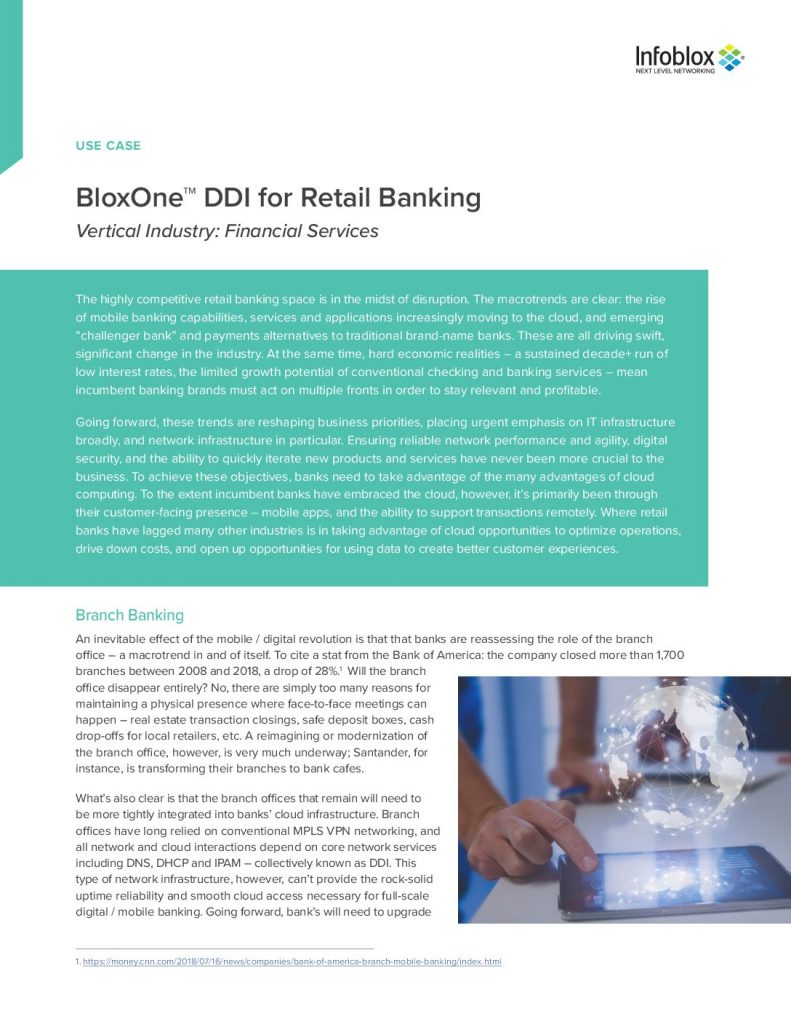The highly competitive retail banking space is in the midst of disruption. The macrotrends are clear: the rise of mobile banking capabilities, services and applications increasingly moving to the cloud, and emerging “challenger bank” and payments alternatives to traditional brand-name banks. These are all driving swift, significant change in the industry. At the same time, hard economic realities – a sustained decade run of low interest rates, the limited growth potential of conventional checking and banking services – mean incumbent banking brands must act on multiple fronts in order to stay relevant and profitable.
Going forward, these trends are reshaping business priorities, placing urgent emphasis on IT infrastructure broadly, and network infrastructure in particular. Ensuring reliable network performance and agility, digital security, and the ability to quickly iterate new products and services have never been more crucial to the business. To achieve these objectives, banks need to take advantage of the many advantages of cloud computing. To the extent incumbent banks have embraced the cloud, however, it’s primarily been through their customer-facing presence – mobile apps, and the ability to support transactions remotely. Where retail banks have lagged many other industries is in taking advantage of cloud opportunities to optimize operations, drive down costs, and open up opportunities for using data to create better customer experiences.






